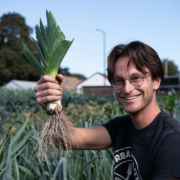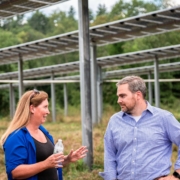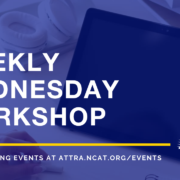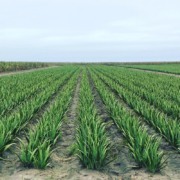The CART Before the Horse: Understanding Access to Federal Assistance for Conservation Solutions
 Print This Post
Print This Post
By Jeff Schahczenski, NCAT Agricultural and Natural Resource Economist
If you had to allocate $3.3 billion of taxpayer dollars to farmers and ranchers who voluntarily wish to change how they farm and ranch so as to “deliver conservation solutions” to protect natural resources and feed a growing world, how would you do it?
This year, the USDA Natural Resources Conservation Service (NRCS) will allocate this sum to applicants of two working-lands conservation programs, the Environmental Quality Incentive Program (EQIP) and the Conservation Stewardship Program (CSP) largely by the means of a new tool called the Conservation Assessment Ranking Tool (CART). On September 17 and 24, and October 8, NRCS and NCAT will present a webinar series that will help farmers and ranchers more fully understand how the CART will assess and rank their applications to these programs.
In the past, farmers and ranchers have accessed these programs to achieve significant improvements in the protection of natural resources and the environment. For example, Montana organic grain farmers Doug and Anna Jones-Crabtree, who began farming 11 years ago, have for 10 years fully utilized CSP and EQIP to great advantage. This year, they have again applied for the CSP and are anxious to hear this fall how they will be ranked by CART. As Anna relates, “through the CSP, we undertook practices such as improved nutrient management, pest management, flex-cropping, cover crop, field borders, and seeding pollinator species.”

Doug and Anna Jones-Crabtree farm organically in Montana. Photo: Anna Crabtree
But despite the efforts of farmers like Doug and Anna, there are many questions and inherent complications as to how one could and should compare the relative conservation efforts of farmers and ranchers nationwide. Some broad but important questions that need answering, and which will be explored in this webinar series, include the following:
- Who decides what conservation efforts are of a higher priority than others?
All of us probably have our own ideas about how best to conserve natural resources, limit negative environmental consequences of farming and ranching, and promote the important environmental services that agriculture provides. For example, improving soil health has been a topic of great interest nationwide. Can a tool like CART assure or improve soil health? The simple answer is yes, if embedded within the CART efforts to improve soil health are prioritized.
The more complex answer is that not all farmers and ranchers in every U.S. county view soil health as the primary objective for conservation at the moment. Indeed, the NRCS tries to allow for farmers and ranchers, at local and state levels, to have some input into what they view as most important. However, since we also live within a federal system of government, Congress and the President (through the USDA) have a say, as well. Thus, not surprisingly, a given farmer or rancher in a given state will not be ranked and assessed by exactly the same criteria, nor will their personal priority for conservation solutions assure them of support.
- Can the best science direct the best conservation solutions?
To continue with our example of soil health, how do we know how best to improve soil health? Does the CART support the best science-based means to assess soil health? Again, the simple answer is that one hopes so, but what is known or not known about how to improve soil health is still very much an open question. In the last session of the CART webinar series, we will explore this very complex issue.
- What are the best conservation solutions to best serve the public good?
There are some farmers, ranchers, and agricultural and conservation organizations who have had philosophical issues with the very intent of working-lands conservation programs. For example, the CSP concept of rewarding farmers and ranchers for their ongoing conservation efforts is fundamentally different from all other federal conservation programs. Some have argued that if farmers and ranchers are already providing these benefits without public support, then why use scarce public resources to continue these efforts? Others have argued that good stewardship by farmers and ranchers provides a public good or investment. It is argued that we all benefit from these stewardship efforts, and that public incentives are required for continued good stewardship of the land and—more importantly—to encourage those who do not provide these public benefits to consider them. These issues—like many others in our democratic system—strike at the broader issue of the proper role of government engagement in protecting both the environment and the future productive capacity of our natural resources.
Join us this September and October and weigh in with your questions and ideas on these important issues.
Webinar 1: Conservation Assessment Ranking Tool (CART): Overview
Recorded on Thursday, September 17, 2020 ~ View it here.
Webinar 2: Conservation Assessment Ranking Tool (CART): The Process
Recorded on Thursday, September 24, 2020 ~ View it here.
Webinar 3: Conservation Assessment Ranking Tool (CART): Deep Dive
Recorded on Thursday, October 8, 2020 ~ View it here.
1:00 PM – 2:00 PM CDT
Please contact jeffs@ncat.org with questions about the webinars.
This blog is produced by the National Center for Appropriate Technology through the ATTRA Sustainable Agriculture program, under a cooperative agreement with USDA Rural Development. ATTRA.NCAT.ORG.


 USDA photo by Christophe Paul
USDA photo by Christophe Paul
 CanvaPro
CanvaPro






